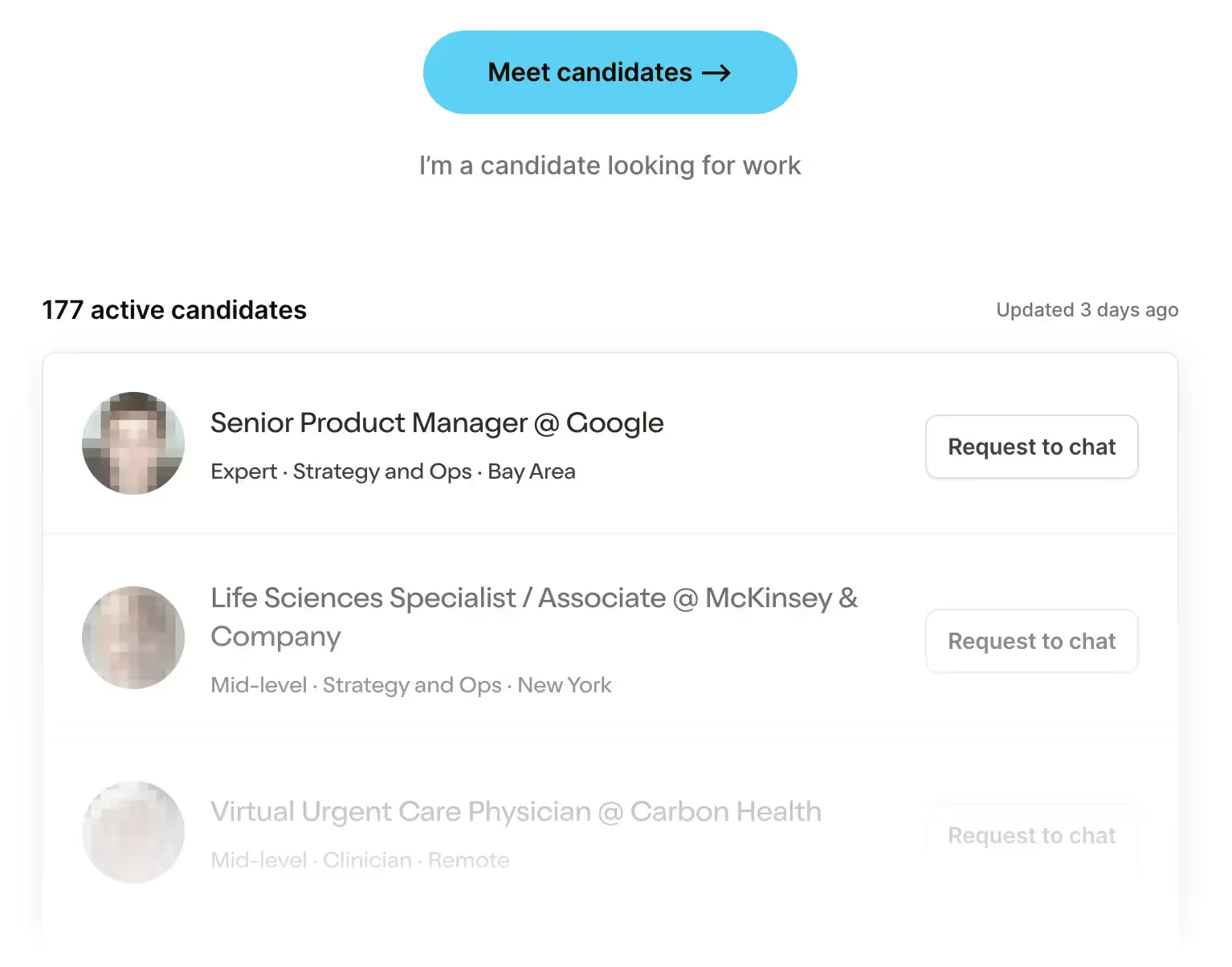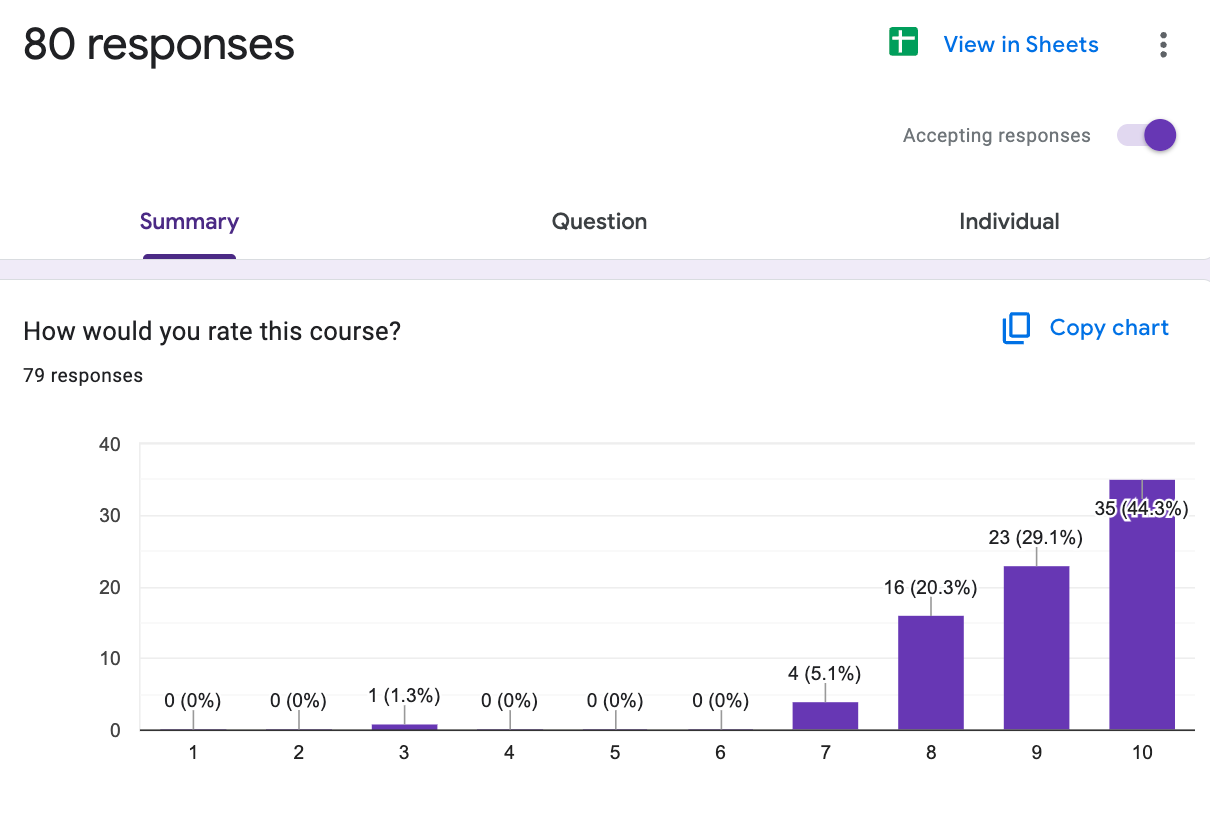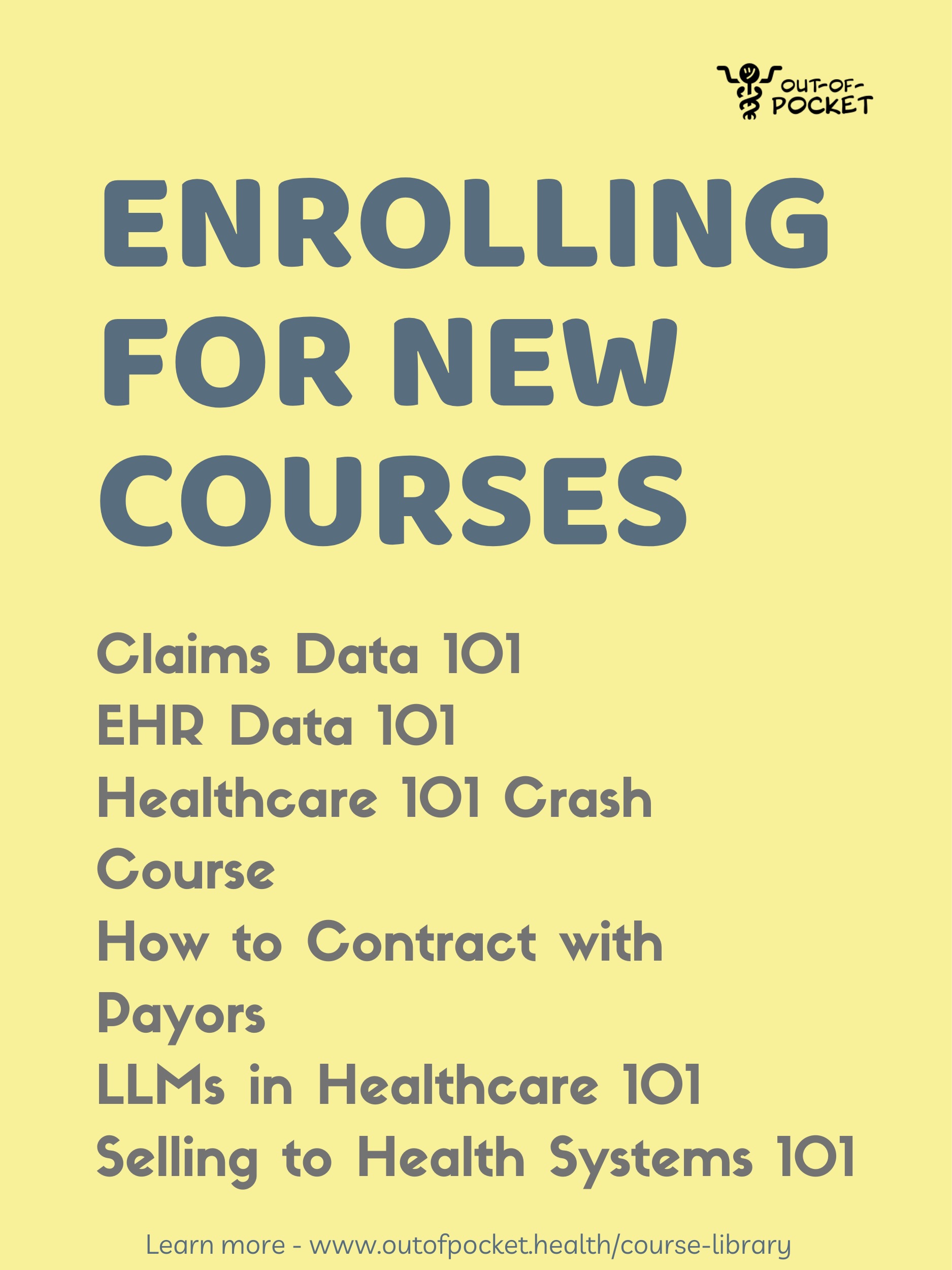Common ROI mistakes in healthcare
Get Out-Of-Pocket in your email
Looking to hire the best talent in healthcare? Check out the OOP Talent Collective - where vetted candidates are looking for their next gig. Learn more here or check it out yourself.
 Hire from the Out-Of-Pocket talent collective
Hire from the Out-Of-Pocket talent collectiveNetwork Effects: Interoperability 101
.gif)
Featured Jobs
Finance Associate - Spark Advisors
- Spark Advisors helps seniors enroll in Medicare and understand their benefits by monitoring coverage, figuring out the right benefits, and deal with insurance issues. They're hiring a finance associate.
- firsthand is building technology and services to dramatically change the lives of those with serious mental illness who have fallen through the gaps in the safety net. They are hiring a data engineer to build first of its kind infrastructure to empower their peer-led care team.
- J2 Health brings together best in class data and purpose built software to enable healthcare organizations to optimize provider network performance. They're hiring a data scientist.
Looking for a job in health tech? Check out the other awesome healthcare jobs on the job board + give your preferences to get alerted to new postings.
The Return of Return On Investment
Last week, Ryan Callahan and I talked about the right way to measure return on investment (ROI) and what good, better, and best looks like. Including our fun lil’ calculator! But Ryan had more bars to spit about this one, so we had to get ‘em back in the booth.
This week, we’ll talk about some of our opinions on ROI targets and common mistakes we’ve seen when calculating ROI after having one or two many RO-IPAs. This is not a joke, Ryan actually got these made for our last OOP Slack retreat.

But first…
{{interlude 1}}

Is there…a right ROI you need to hit?
Last week we talked about how you could do increasingly more sophisticated analyses to prove ROI, but not necessarily a different number coming out. It’s entirely possible that the end result of each one of these phases could all be “200% ROI”, just proven out in increasingly more costly and consulting-y ways.
So is there a magic ROI number, anyway? Is it 200%? Or 500%, or 1,000%? Situations will vary, but:
- 300% is just a pretty good benchmark to try to hit for relatively risky projects - to put it another way, if all the cost comes from you in a 300% ROI project, you’d be taking a one-third cut of the benefits of the project and taking anything above one-third just starts to feel high. Collections agencies, for example, don’t generally go higher than 30-40% contingency fees. That means 300% should be the minimum floor for ROI in situations where your customer perceives a significant amount of risk.
- Technically, customers should be willing to invest in lower-risk solutions that meet their internal hurdle rate. This is roughly speaking, how much return they feel they could get on their money without working too hard at it. That hurdle rate usually equates to something like 110% to 150% ROI.
- But in practice, there are costs to managing products and vendors and the motivation needed to start something new will probably be higher than the hurdle rate. Hinge Health published data calculating a 200-270% ROI for their programs in 2023 and it worked out pretty well for them!

- You can go too high, too. A 50,000% ROI might sound great for marketing (and yet low for a stock trading course). However, it could also be that you’re just underpricing or customers don’t think you can actually back that up. Plus a super high ROI could lead some customers to wonder if they couldn’t just do a hacky version themselves if it’s really that golden of an opportunity.
Another aspect to think about is the timeline to prove ROI. A big part of this will be influenced by the current macroeconomic environment + and the micro financial situation your customer is in. In June 2025 for example, hospitals will expect you to demonstrate positive ROI within a fiscal year and employers are way less willing to accept “soft” ROI measures like wellness. Regulatory uncertainty means companies are less willing to take bets on 2+ year ROIs across the board.
There’s a few ways you can approach this. You can use a phased approach where you demonstrate ROI in one area within 12-18 months and then a larger ROI somewhere else. For example, if you help Medicare Advantage plans with supplemental benefits then you can try to demonstrate ROI in the form of getting new enrollees within the next enrollment period while later demonstrating a medical spend ROI or or Stars rating boost for bonus payment ROI in 2-3 years.
Another way to approach this is to use milestone based payments that align your payment cycle to when ROI is being realized. If you’re demonstrating reduced emergency department usage, then you can share the savings once you prove that out. Just make sure you’re picking milestones that you can attribute to your company specifically and your company will actually survive that long.
A third way is to give up. We’re all going to be out of jobs in like 4 years anyway when the AI gets good enough, who cares about any of this.
Eight ROI Traps to Avoid
Since most companies will need to make do with Basic and Better ROI through early stages of growth, what’s the best way to go about doing that? Here are eight ways that healthcare companies commonly trip up, and advice on what to do instead.
Assuming that clinical quality will naturally lead to ROI
- Weak example: Selling higher cost antiseptic-infused sutures to hospitals based on reducing the number of surgical site infections; however, these sutures are not separately reimbursable
- How to fix: Find ways to translate clinical quality into financial impact
- Stronger example: Translate reduction in surgical site infections into increased hospital profit by reducing the how long a patient takes up a bed in the hospital and avoiding readmissions that get penalized/reimbursed less (like this!).

Calling something ROI that’s not in fact ROI
- Weak example: Time savings in automated patient registration improves the experience for staff and lower likelihood of a patient crashout, but there’s no savings or increase in patient volume associated
- How to fix: Don’t hesitate to mention other benefits or sources of value, but pair it with a hard financial ROI
- Stronger example: Automating patient registration will enable a 20% reduction in registration staff and avoid 1-2 no-shows per day who leave the line and don’t come back. Here’s an example from Surgimate that walks through how reducing admin time/coordination increases the number of surgeries and reduces the number employees needed.

Making ROI cookie-cutter
- Weak example: Rolling out a program for musculoskeletal health across an enterprise without taking patient age into consideration in ROI
- Instead: Be sure to critically assess the implementation path and customize ROI according to the likely impact in different subgroups
- Stronger example: Prioritize facilities with older patient populations who will benefit more in the short term from MSK programs and drive ROI faster
Implementation -> ??? -> ROI
- Weak example: A group purchasing organization claims that the main success metric will be improved hospital gross margin. But hospital gross margin is potentially influenced by many other factors.
- How to fix: Feel free to mention this as something you’ll contribute to, but make the main success metric something you own. Control your destiny!!!
- Stronger example: Determine a baseline for cost of goods sold for certain targeted categories that you’ll own completely; for example, aiming to reduce the spend on blood products down from $250 per unit to less than $200 (please don’t ask how!) that will contribute to gross margin improvements
Making ROI your customer’s problem
- Weak example: An AI solution handles the administrative work for registries and quality audits that take up about 5% of the nursing leadership’s time; this will not enable the reduction of salaried nursing leaders, just reallocating their time to “higher value tasks”...but figuring out what that means is the “customer’s problem”.
- How to fix: The customer problem is gonna be YOUR problem when the contract needs to be renewed. Be clear in advance about how the “higher value tasks” will be tracked and ensure that the commitment is in place to free the nursing leaders up to do those tasks.
- Stronger example: Have a change management plan that includes specific tasks that the nursing leadership will perform (perhaps even unrelated to your solution!) and how the budget will change as a result (e.g., reallocate the 5% of time to implementing efficiency initiatives in staffing schedules)

Only telling one side of the story (include the fees!)
- Weak example: A patient collections solution demonstrates that they can bring in incremental dollars by engaging patients more effectively in billing, pointing to an ROI of “$10,000 in additional payments each week” without mentioning their fees; the customer anchors on the “$10,000” which, after fees, turns out to be–disappointingly–only “$8,000”
- How to fix: Build in both sides of the ROI calculation from the start
- Stronger example: Lead with a more complete framing, like “for every one dollar you give us, we’ll get you four,” or simply, “you’ll have $8,000 more in your bank account each week net of our fees than you would without us”

Irrational exuberance about ROI
- Weak example: A scheduling software claims patient volumes will increase 20% based on the idea that the customer has 20% of dropped calls currently, and they’ll fix that
- How to fix: Be very careful about assuming 100% reductions in anything, and have case studies of what conversion rates are realistic
- Stronger example: Show existing customer data (anonymized) with candid discussion of why some are at 5% dropped call rates and some are at 1%
Kicking the can down the road on ROI
- Weak example: A diabetes management solution believes that the impact of their solution will only become clear in year 5 or later
- How to fix: Define interim measures that will show value on shorter time horizons
- Stronger example: Determine examples of near-term savings that show some return, even if it’s not positive or comprehensive, to provide short-term motivation; for example, avoiding ED visits due to diabetes-related hyperglycemia or hypoglycemia

Conclusion + parting thoughts
There’s a few things that will come up constantly as you build a healthcare company.
- Figuring out if a feature is compliant while paying the least amount of money to answer that question
- Deciding whether you should “become the front door to healthcare” alongside all 6000 other front doors
- Understanding how to prove ROI to your customers as your company evolves
Knowing what bar you need to clear for healthcare ROI is not at all straightforward, and many companies need a lot of at-bats to find something durable that’s authentic to their company’s story and also matches up well with the messy health system.
You don’t have to do everything all at once on day 1, but establishing a culture of Basic, Better, and Best ROI will pay off as you make more decisions that orient toward where your customers find value. Your employees should understand the levers of ROI that your business and customers care about to understand internal prioritization.
Below we have a ballpark breakdown of what kind of evidence you should be building by stage of company.

Pssst…on our How to Contract with Payors and How to Sell to Health Systems courses, we teach you how to find the right champion based on what your ROI story is. Many people that have taken the course have realized that how they frame their product in terms of ROI is bad, and they’ve been targeting the wrong customers all along.

Thinkboiz out,
Nikhil aka. “LeeROI Jenkins.” and Ryan aka. “ROIan”
Twitter: @nikillinit
IG: @outofpockethealth
Other posts: outofpocket.health/posts
--
{{sub-form}}
If you’re enjoying the newsletter, do me a solid and shoot this over to a friend or healthcare slack channel and tell them to sign up. The line between unemployment and founder of a startup is traction and whether your parents believe you have a job.
INTERLUDE - FEW COURSES STARTING VERY SOON!!
See All Courses →A reminder that there’s a few courses STARTING VERY SOON!!
LLMs in healthcare (starts 9/8) - We break down the basics of Large Language Models like chatGPT, talk about what they can and can’t do in healthcare, and go through some real-world examples + prototyping exercises.
Healthcare 101 (starts 9/22) - I’ll teach you and your team how healthcare works. How everyone makes money, the big laws to know, trends affecting payers/pharma/etc.

We’ll do group rates, custom workshops, etc. - email sales@outofpocket.health and we’ll send you details.
INTERLUDE - FEW COURSES STARTING VERY SOON!!
See All Courses →A reminder that there’s a few courses STARTING VERY SOON!! And it’s the final run for all of them (except healthcare 101).
LLMs in healthcare (starts 9/8) - We break down the basics of Large Language Models like chatGPT, talk about what they can and can’t do in healthcare, and go through some real-world examples + prototyping exercises.
Healthcare 101 (starts 9/22) - I’ll teach you and your team how healthcare works. How everyone makes money, the big laws to know, trends affecting payers/pharma/etc.
How to contract with Payers (starts 9/22) - We’ll teach you how to get in-network with payers, how to negotiate your rates, figure out your market, etc.
We’ll do group rates, custom workshops, etc. - email sales@outofpocket.health and we’ll send you details.
INTERLUDE - FEW COURSES STARTING VERY SOON!!
See All Courses →A reminder that there’s a few courses STARTING VERY SOON!! And it’s the final run for all of them (except healthcare 101).
LLMs in healthcare (starts 9/8) - We break down the basics of Large Language Models like chatGPT, talk about what they can and can’t do in healthcare, and go through some real-world examples + prototyping exercises.
Healthcare 101 (starts 9/22) - I’ll teach you and your team how healthcare works. How everyone makes money, the big laws to know, trends affecting payers/pharma/etc.
How to contract with Payers (starts 9/22) - We’ll teach you how to get in-network with payers, how to negotiate your rates, figure out your market, etc.
Selling to Health Systems (starts 10/6) - Hopefully this post explained the perils of selling point solutions to hospitals. We’ll teach you how to sell to hospitals the right way.
EHR Data 101 (starts 10/14) - Hands on, practical introduction to working with data from electronic health record (EHR) systems, analyzing it, speaking caringly to it, etc.
We’ll do group rates, custom workshops, etc. - email sales@outofpocket.health and we’ll send you details.
INTERLUDE - FEW COURSES STARTING VERY SOON!!
See All Courses →Our Healthcare 101 Learning Summit is in NY 1/29 - 1/30. If you or your team needs to get up to speed on healthcare quickly, you should come to this. We'll teach you everything you need to know about the different players in healthcare, how they make money, rules they need to abide by, etc.
Sign up closes on 1/21!!!
We’ll do group rates, custom workshops, etc. - email sales@outofpocket.health and we’ll send you details.

Interlude - Our 3 Events + LLMs in healthcare
See All Courses →We have 3 events this fall.
Data Camp sponsorships are already sold out! We have room for a handful of sponsors for our B2B Hackathon & for our OPS Conference both of which already have a full house of attendees.
If you want to connect with a packed, engaged healthcare audience, email sales@outofpocket.health for more details.







